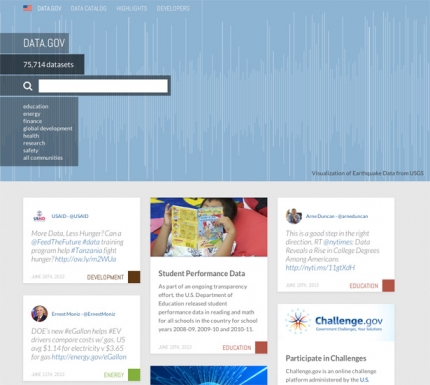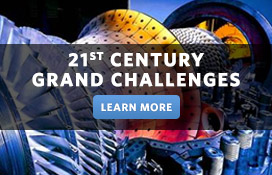Office of Science and Technology Policy Blog
We the Geeks: The Stuff Superheroes Are Made Of
Posted by on July 17, 2013 at 3:15 PM EDTEd. note: This event has concluded. Watch the full hangout below.
This week, as thousands of sci-fi and superhero enthusiasts gather in San Diego for Comic-Con, here at the White House we’ll be gathering some of the Nation’s top innovators who are designing materials to enable real-life superpowers—including invisibility and super-strength.
This Friday, July 19th at 12:00 pm EDT for a “We the Geeks” Google+ Hangout on “The Stuff Superheroes Are Made Of” – where we’ll be talking about some of the most exciting new developments in materials science and how they can change our world for the better.
You’ll meet American scientists and innovators working on materials and technologies with amazing capabilities—seemingly ripped straight from the pages of a comic book or film script—including invisibility cloaks, impenetrable liquid armor, self-healing, touch-sensitive synthetic skin, and more. You’ll also hear how the Obama Administration’s Materials Genome Initiative – which just celebrated its second birthday – is helping to enable and accelerate these breakthroughs with the goal of making them happen faster and cheaper than ever before.
Learn more about TechnologyImmigrant Entrepreneurs and Common-Sense Immigration Reform
Posted by on July 16, 2013 at 11:46 AM EDTLast month, President Obama praised the Senate for passing commonsense immigration reform through a bipartisan bill that is the best opportunity we’ve had in years to fix the Nation's broken immigration system. If it were signed into law, this bill would benefit the U.S. economy, foster innovation, and encourage more job creation, as summarized in a recent White House report and animated video.
These benefits stem in part from the significant contributions of immigrant entrepreneurs, who have started one of every four small businesses and high-tech startups across America. More than 40 percent of Fortune 500 companies—from GE and Ford to Google and Yahoo!—were founded by immigrants or the children of immigrants.
Prior to the bipartisan bill passing in the Senate in a 68-32 vote, the President said:
So immigration isn’t just part of our national character…it is a driving force in our economy that creates jobs and prosperity for all of our citizens… Right now, our immigration system invites the best and the brightest from all over the world to come and study at our top universities, and then once they finish -- once they’ve gotten the training they need to build a new invention or create a new business -- our system too often tells them to go back home so that other countries can reap the benefits, the new jobs, the new businesses, the new industries. That’s not smart. But that’s the broken system we have today.
Learn more about Innovations, ImmigrationFirst Look at Next.Data.gov
Posted by on July 16, 2013 at 9:00 AM EDTLast week, President Obama talked about the importance of opening government data to the American people, so entrepreneurs and business owners can use those troves of information to create jobs and solve problems that government can’t solve by itself. In remarks last Monday, he noted many examples of the Administration’s progress toward making that happen, saying:
“At Data.gov, you can search through and download more than 75,000 data sets – data on everything from what different hospitals charge for different procedures, to credit card complaints, to weather and climate measurements.”
Today, we’re excited to share a sneak preview of a new design for Data.gov, called Next.Data.gov. The upgrade builds on the President’s May 2013 Open Data Executive Order that aims to fuse open-data practices into the Federal Government’s DNA. Next.Data.gov is far from complete (think of it as a very early beta), but we couldn’t wait to share our design approach and the technical details behind it – knowing that we need your help to make it even better. Here are some key features of the new design:
 Learn more about Innovations, Technology
Learn more about Innovations, TechnologyA Smarter, More Innovative Government for the American People
Posted by on July 8, 2013 at 1:49 PM EDTOne of the President’s first priorities after taking office in 2009 was to bring a government built for the 20th century into the 21st century. Over the last four years, we’ve made great progress to advance this goal, thanks in large part to the integration of new technologies and innovations across the Administration.
This morning, the President held a meeting with his Cabinet and senior officials to lay out his vision for building a better, smarter, faster government over the course of his second term. During the meeting, the President directed Cabinet members and key officials in his Administration to build on the progress made over the first term, and he challenged us to improve government even further.
To help members of the Cabinet and Administration officials find more innovative ways to deliver better results, the Administration recently welcomed a second class of Presidential Innovation Fellows – 43 highly talented and motivated individuals chosen out of more than 2,000 applicants. The first class of 18 Presidential Innovation Fellows worked hand-in-hand with top government innovators to develop solutions that are delivering smart-government solutions to taxpayers at a lower cost.
Learn more about TechnologyGolden Geese: Honking for Science
Posted by on July 3, 2013 at 6:14 PM EDTAt a time when sequestration is forcing science-funding agencies to cut millions of dollars from their research budgets and short-sighted budget-cutters feel free to mock grant proposals just because they seem obscure or don’t have obvious potential for immediate impact, the story of William H. Coulter can be instructive.
Coulter was a researcher and inventor who some fifty years ago was tasked with a seemingly mundane problem. The paint the Navy was using to protect its ships varied a bit from batch to batch in the number of suspended pigment particles it contained. Coulter got a grant from the Office of Naval Research to see if he could get a better measure of those particles so the paint could be made a bit more consistent.
The problem was not exactly one on which wars would be won or lost. In tight budgetary times like today’s it would be easy to imagine that grant money going to something “more important.”
But one night in 1947, when Coulter ran out of paint in his garage-based lab (turns out that MacIntosh computers and Google’s search algorithms were not the first things to get invented in garages) Coulter substituted the only other viscous fluid at his disposal—some of his own blood. That’s when he made the amazing discovery that his nascent technique of using alterations in electrical resistance to measure particles in paint could also measure the number of cells in a sample of blood.
Thus was born the Coulter Counter, a machine that, to this day, remains a standard means of automatically counting cells in blood samples for the diagnosis of anemia and a range of other blood disorders.
Open Government is an Open Conversation
Posted by on July 3, 2013 at 6:08 PM EDTPresident Obama launched the first U.S. Open Government National Action Plan in September 2011, as part of the Nation’s commitment to the principles of the global Open Government Partnership. The Plan laid out twenty-six concrete steps the United States would take to promote public participation in government, increase transparency in government, and manage public resources more effectively.
A year and a half later, we have fulfilled twenty-four of the Plan’s prescribed commitments—including launching the online We the People petition platform, which has been used by more than 9.6 million people, and unleashing thousands of government data resources as part of the Administration’s Open Data Initiatives.
We are proud of this progress, but recognize that there is always more work to be done to build a more efficient, effective, and transparent government. In that spirit, as part of our ongoing commitment to the international Open Government Partnership, the Obama Administration has committed to develop a second National Action Plan on Open Government.
To accomplish this task effectively, we’ll need all-hands-on-deck. That’s why we plan to solicit and incorporate your input as we develop the National Action Plan “2.0.”
We’ve already started the input-gathering process. Just two weeks ago, Syracuse University Professor Tina Nabatchi of the Maxwell School of Citizenship and Public Affairs convened a “Public Participation and Open Government Workshop.” At the workshop, experts from academia, civil society, and government exchanged ideas with the goal of developing best practices and metrics for public participation in policymaking. And leading up to the workshop, the National Coalition for Dialogue & Deliberation held an online dialogue to solicit ideas around public participation evaluation and metrics.
Learn more about Ethics
- &lsaquo previous
- 1
- 2
- 3
- 4
- 5
- 6
- 7
- 8
- 9
- …
- next &rsaquo
White House Blogs
- The White House Blog
- Middle Class Task Force
- Council of Economic Advisers
- Council on Environmental Quality
- Council on Women and Girls
- Office of Intergovernmental Affairs
- Office of Management and Budget
- Office of Public Engagement
- Office of Science & Tech Policy
- Office of Urban Affairs
- Open Government
- Faith and Neighborhood Partnerships
- Social Innovation and Civic Participation
- US Trade Representative
- Office National Drug Control Policy
categories
- AIDS Policy
- Blueprint for an America Built to Last
- Equal Pay
- White House Internships
- Civil Rights
- Defense
- Disabilities
- Economy
- Education
- Energy and Environment
- Ethics
- Faith Based
- Family
- Fiscal Responsibility
- Foreign Policy
- Grab Bag
- Health Care
- Homeland Security
- Immigration
- Inside the White House
- Middle Class Security
- Poverty
- Rural
- Seniors and Social Security
- Service
- Social Innovation
- Taxes
- Technology
- Urban Policy
- Veterans
- Violence Prevention
- Women
- Additional Issues









